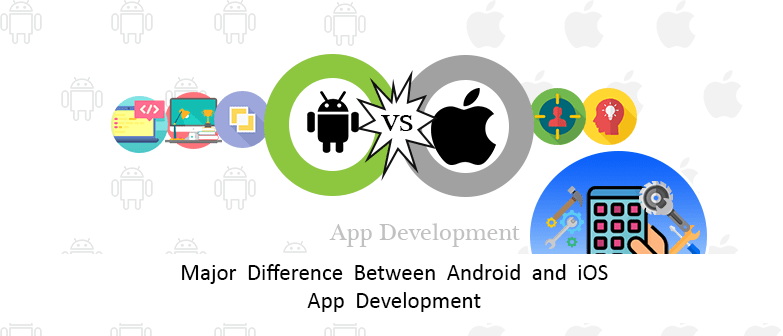Developing an app becomes toughest and biggest task. It is growing fast due to the mobile phones dispersion, popularity among end-users and evolving business requires. According to Statistics survey, the Smartphone users’ number is calculate to attain more than 2.53 billion in 2018. The number of mobile phone users in the world is predictable to go by the five billion mark by 2019.
In this article, we will illustrate the comparison between Android and iOS app development main categories to recognize the basic changes and establish more appropriate OS platform to build an app for your business. So let’s starts in:
- Development language
Java relate to Android-based apps when creating. It needs a more code to be written. A brand-new language Swift was intended to extend iOS-based apps. The coding on Swift is much quicker as compared to Java. Its take lot of time for Java engineers to code as compared to Swift ones.
There is a probable choice to Java – Kotlin coding language that is totally interoperable with Java. It was intended as Java language improvement: instinctive, simple to read. besides, now Kotlin is considered to be the major language to build an Android-powered application.
- Integrated development environment availability
Initially engineers functional Eclipse tool as an environment for Google-backed application development. After that Google released Studio, and all engineers started to utilize it due to its admirable promises: cross-platform, simple packaging, a massive amount of functionality and enormous debugging.
iOS developers utilize XCode when increasing Apple-backed iOS apps. It is an extremely productive environment for creating amazing apps for iOS devices. It also has a option to find out the mistakes/errors in both syntax and logic and even find the code fixed.
- Design
The Below mentioned design principles that must be considered while designing a mobile app:
Screen sizes and resolutions. Apple-backed iOS devices have two screen sizes with more than three feasible resolutions for iPhone and a few for iPad. iPhone 4 resolution is also used for iPad. Meanwhile, Google-backed tools, which runs on Android, has a huge number of screen sizes that correspondingly lead to a wide range of screen resolutions.
Navigation: For Android devices navigation bar is located left whereas iOS one shifted to the top. Android-based desires colorful icons while iOS keeps its navigation icons blue or gray by default.
Menu: Google-backed devices desire having a drawer menu or a side/hamburger menu, which generally places on the left after the tap-and-pull sign, while iOS prioritizes its tab bar which is normally placed at the bottom with a relatively simpler access to the hidden menu icons. Hamburger menu is also broadly used for iOS-based devices, but should be tailored.
Alerts and pop-ups: These tabs rapidly show and need prompt actions. So, there are some small distinctions in alerts and pop-ups. Android users must submit an action to evade the alerts by selecting “Agree/Disagree” or “Don’t allow/Okay” for Apple-backed users. There are two types of alerts for iOS-powered devices – alert and action sheet. They appear alike and their functionality is the identical, but if it is required more than two actions (by adding Cancel), actionsheet is applied.
‘Back’ button: The Apple-backed platform does not have a real ‘Back’-button while Google-backed in order users can return to the prior page earlier opened. But iPhone users can use the top left button to go back to the previous screens in the hierarchical order without navigating through the complete app.
- The audience
Demographic statistics can provide more helpful information about users that use Android/iOS-powered components. It is the true north where the analysis should be in progress. The Google-backed platform currently clutches the largest global platform share.

- Monetization Strategy
Let’s think about the next aspect the majority of your audience as the vital aspect when choosing an OS platform to build an app. Apple users mainly focus on purchases while Android users depend primarily on ad-supported apps.
For more queries, contact iOS app development services.


Leave a Reply to Kimberly Cancel reply